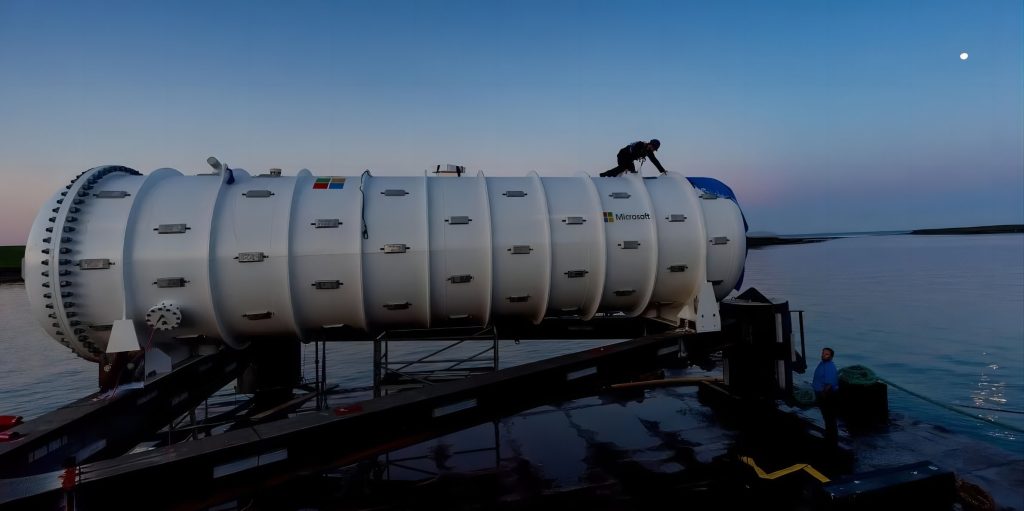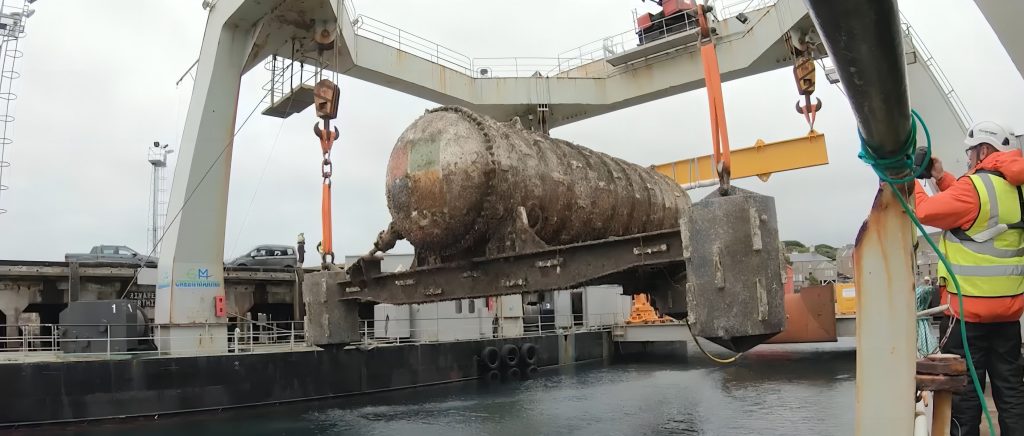Use natural resources to cool down, develop new cooling technology, and use green renewable energy.
1、Build the data center to the bottom of the sea
In order to use the power of nature to cool down the data center, Microsoft built the data center to the bottom of the sea. This is a research project launched by Microsoft in 2015 - Project Natick. in 2018, 12 racks with a total of 864 servers, sunk into the seabed near the Orkney Islands in Scotland, UK. on July 9, 2020 the data center completed its work task and successfully came ashore, and the data was extracted and The data will be extracted for analysis and learning.


The "Undersea Data Center" was originally proposed during Microsoft's "ThinkWeek" campaign to encourage employees to share innovative ideas to reduce data center energy consumption by cooling servers with seawater. Phase 1 was launched in July 2014, and Project Natick completed a concept prototype in just 12 months and deployed it in shallow water near California, USA. This demonstrates that an "underwater data center" is feasible.
In Phase II, at the European Marine Energy Centre in Scotland, Project Natick is focusing on whether an "underwater data center" is still logistically, environmentally and economically feasible.
Why in the Orkney Islands, Scotland, UK? The tidal currents here can reach a maximum strength of 9 mph, with waves regularly churning up to 10 feet high on the surface and up to 60 feet in stormy weather. Combined with the sun, the natural environment provides excellent renewable energy. The Microsoft team deployed its data center here with the goal of later providing a rapidly deployable, energy self-sufficient data center for the world.
In addition to Microsoft, 'Highlander' from China has become the second company to be able to provide a subsea data center solution. According to the company's announcement, the subsea data center has officially entered the commercial phase in 2022. Subsea data centers have huge development potential, but at the same time the investment risk is high and the amount is high. The total investment amount of the first phase of Hailanxin's subsea data center project is 576 million RMB.
2. More advanced cooling technology
Liquid cooling instead of air cooling is already a relatively mature concept. In 2013, CCSU launched the "submerged phase change liquid cooling technology", which uses liquid as the refrigerant to transfer the heat generated by the CPU, memory, power system and other heat-generating components inside the equipment by means of phase change heat, and then do heat exchange with water to finally discharge the heat. 2019's first " Blade submerged phase change liquid cooling technology" to complete the commercialization of large-scale deployment.
On the one hand, the air-cooled technology is close to the upper limit, compared to the specific heat capacity of the liquid is relatively large so its cooling efficiency is higher; on the other hand, the use of liquid heat can be captured and recovered, to be reused. For example, Intel worked with Sumber to develop a waste heat recovery technology based on immersion cooling. In Barcelona, Intel provides servers with Xeon architecture and Sumber provides precision cooling technology, combining into a circular heat reuse model where waste heat is injected into the local district heating network.
3. More use of clean energy
In 2022, Meta has built three huge data centers in Missouri, Idaho, and Texas respectively. Each has an investment of over $800 million. All of them use 100% renewable energy.
All data centers on Meta's official website are 100% renewable energy, mainly including wind and solar.
Our data centers are supported by 100% renewable energy. Meta partners with utilities and other stakeholders to develop new, renewable energy resources Additionally, Meta data centers are designed from the ground up to be among the most efficient in the Additionally, Meta data centers are designed from the ground up to be among the most efficient in the world and earn LEED Gold Certification.
Because Meta's data centers are built in different parts of the world with vastly different geographies and climates, Meta and Nortek Air Solutions collaborated to develop a StatePoint Liquid Cooling (SPLC) system that utilizes cold water evaporative cooling technology, where water is cooled as it evaporates through a membrane separation layer. This cold water is then used to cool the air within the data center.
SPLC units are deployed on the roofs of data centers to convert outside air into chilled water, which is then supplied to fan-coil walls (FCWs). These FCW units use the cold water provided by the SPLC units to cool the air, which is used to cool the servers. The hot water produced by the heat exchange in the FCW units is returned to the SPLC units, which are then cooled and circulated through the system. This technology can work in different climatic and geographical conditions and has better cooling efficiency.
